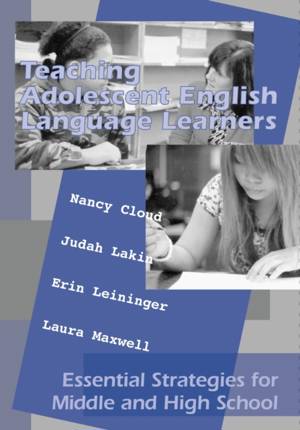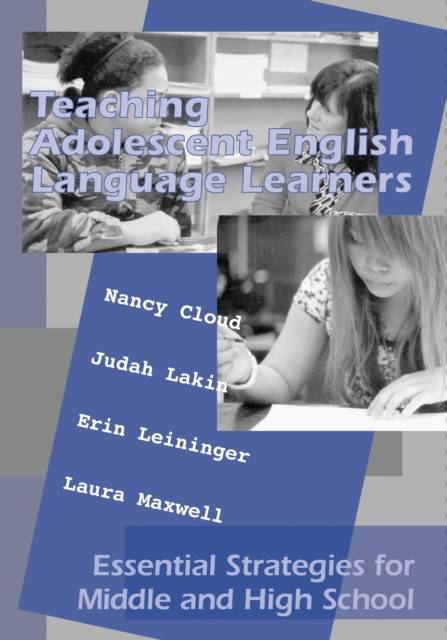
- Retrait gratuit dans votre magasin Club
- 7.000.000 titres dans notre catalogue
- Payer en toute sécurité
- Toujours un magasin près de chez vous
- Retrait gratuit dans votre magasin Club
- 7.000.0000 titres dans notre catalogue
- Payer en toute sécurité
- Toujours un magasin près de chez vous
Teaching Adolescent English Language Learners
Essential Strategies for Middle and High School
Nancy Cloud, Judah Lakin, Erin Leininger, Laura Maxwell
Livre broché | Anglais
60,95 €
+ 121 points
Description
Are your adolescent English language learners struggling to read, write, and learn across subject areas? Are they making it to graduation? This practical guide is grounded in the latest research on adolescent literacy development. It features effective strategies for content teachers, ESL teachers, and guidance counselors to ensure that middle and high school English language learners can engage with complex grade-level content-area instruction, develop oral and written language for academic purposes, and graduate. It is written by exemplary secondary school teachers who know firsthand the challenges of educating adolescent ELLs, and who have implemented these strategies effectively in their classes. As Deborah Short highlights in the foreword, this book also offers much more than teaching strategies. It is about the social dimension of learning in secondary schools; of shaping oneâ (TM)s identity; and of bridging the boundaries between school and home, school and work, native languages and English, and in-school and out-of-school literacies. Key Features
- Clear teaching principles to inform practice
- A wealth of strategies and best practices that promote reading, writing, listening, speaking, and learning in every subject area
- Creative ways to use and support the native language
- Guidelines and practical advice for counselors regarding ELLs
- End of chapter checklists to guide teacher reflection
Spécifications
Parties prenantes
- Auteur(s) :
- Editeur:
Contenu
- Nombre de pages :
- 272
- Langue:
- Anglais
Caractéristiques
- EAN:
- 9781934000007
- Date de parution :
- 02-02-10
- Format:
- Livre broché
- Format numérique:
- Trade paperback (VS)
- Dimensions :
- 175 mm x 251 mm
- Poids :
- 544 g

Les avis
Nous publions uniquement les avis qui respectent les conditions requises. Consultez nos conditions pour les avis.






